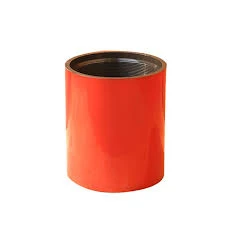- Afrikaans
- Albanian
- Amharic
- Arabic
- Armenian
- Azerbaijani
- Basque
- Belarusian
- Bengali
- Bosnian
- Bulgarian
- Catalan
- Cebuano
- Corsican
- Croatian
- Czech
- Danish
- Dutch
- English
- Esperanto
- Estonian
- Finnish
- French
- Frisian
- Galician
- Georgian
- German
- Greek
- Gujarati
- Haitian Creole
- hausa
- hawaiian
- Hebrew
- Hindi
- Miao
- Hungarian
- Icelandic
- igbo
- Indonesian
- irish
- Italian
- Japanese
- Javanese
- Kannada
- kazakh
- Khmer
- Rwandese
- Korean
- Kurdish
- Kyrgyz
- Lao
- Latin
- Latvian
- Lithuanian
- Luxembourgish
- Macedonian
- Malgashi
- Malay
- Malayalam
- Maltese
- Maori
- Marathi
- Mongolian
- Myanmar
- Nepali
- Norwegian
- Norwegian
- Occitan
- Pashto
- Persian
- Polish
- Portuguese
- Punjabi
- Romanian
- Russian
- Samoan
- Scottish Gaelic
- Serbian
- Sesotho
- Shona
- Sindhi
- Sinhala
- Slovak
- Slovenian
- Somali
- Spanish
- Sundanese
- Swahili
- Swedish
- Tagalog
- Tajik
- Tamil
- Tatar
- Telugu
- Thai
- Turkish
- Turkmen
- Ukrainian
- Urdu
- Uighur
- Uzbek
- Vietnamese
- Welsh
- Bantu
- Yiddish
- Yoruba
- Zulu
stainless steel hose couplings
Stainless Steel Hose Couplings An Overview
In industrial and commercial applications, maintaining a robust and reliable connection between hoses is crucial for the efficient transfer of fluids and gases. Stainless steel hose couplings play a pivotal role in ensuring that these connections are not only secure but also resistant to a variety of environmental factors. This article aims to delve deeper into stainless steel hose couplings, exploring their types, advantages, applications, and maintenance tips.
What are Stainless Steel Hose Couplings?
Stainless steel hose couplings are mechanical devices designed to connect two hoses or a hose to a pipe. Constructed from stainless steel, these couplings offer exceptional durability and resistance to corrosion, making them suitable for a range of applications, from domestic plumbing to heavy-duty industrial use. Their design typically includes fittings that allow for easy connection and disconnection, facilitating the quick replacement of hoses when necessary.
Types of Stainless Steel Hose Couplings
There are several types of stainless steel hose couplings, each tailored for specific applications
1. Quick Disconnect Couplings These allow for rapid connection and disconnection with minimal effort. Ideal for applications where hoses need to be changed frequently, they are commonly used in automotive and manufacturing sectors.
2. Cam and Groove Couplings Featuring a unique design with grooves that interlock, cam and groove couplings provide a secure fit. They are widely utilized in agricultural, chemical, and food processing industries.
3. Threaded Couplings As the name suggests, these couplings feature threads that screw onto the hose, providing a secure and leak-proof connection. They are often found in plumbing and construction settings.
4. Screwed or Flanged Couplings These feature a flange for bolting to pipes or other equipment, ensuring a stationary, robust connection. They are common in fixed installations.
Advantages of Stainless Steel Hose Couplings
Stainless steel hose couplings offer numerous advantages, making them a preferred choice across various sectors
- Corrosion Resistance One of the primary benefits of using stainless steel is its resistance to rust and corrosion. This characteristic is crucial in environments with exposure to moisture or aggressive chemicals.
- Durability and Strength Stainless steel is incredibly strong and can withstand high pressures, making it suitable for applications involving steam or pressurized liquids.
stainless steel hose couplings

- Temperature Resistance Stainless steel hose couplings can function effectively at a wide range of temperatures, from extreme cold to high heat, ensuring reliable performance in diverse conditions
.- Hygienic Properties The smooth surface of stainless steel reduces the buildup of bacteria and makes it easier to clean, which is particularly important in food processing and healthcare applications.
- Recyclability Stainless steel is 100% recyclable, making these couplings an environmentally friendly option.
Applications of Stainless Steel Hose Couplings
Stainless steel hose couplings are used in various applications, including
- Food and Beverage Industry Ensuring sanitary conditions during the transfer of liquids. - Chemical Processing Handling corrosive substances safely. - Water Treatment Connecting hoses used in filtration and distribution systems. - Pharmaceuticals Maintaining sterile environments during drug production. - Automotive Facilitating fluid transfer in vehicles.
Maintenance of Stainless Steel Hose Couplings
To ensure longevity and optimal performance, regular maintenance of stainless steel hose couplings is essential. Here are some tips
1. Routine Inspections Regularly check for signs of wear, cracking, or corrosion. Early detection can prevent larger issues.
2. Cleaning Clean the couplings regularly to remove any buildup of dirt or chemicals that may lead to corrosion or impact performance.
3. Lubrication For quick disconnect and cam and groove couplings, apply a suitable lubricant to the moving parts to ensure they operate smoothly.
4. Replacement If couplings show severe wear or damage, replace them promptly to maintain system integrity.
In conclusion, stainless steel hose couplings offer a reliable and durable solution for various fluid transfer applications. Their advantages, including corrosion resistance and strength, make them a valuable asset in many industries. By understanding their types, benefits, and maintenance requirements, users can ensure efficient and safe operations in their specific applications.
-
Tubing Pup Joints: Essential Components for Oil and Gas OperationsNewsJul.10,2025
-
Pup Joints: Essential Components for Reliable Drilling OperationsNewsJul.10,2025
-
Pipe Couplings: Connecting Your World EfficientlyNewsJul.10,2025
-
Mastering Oilfield Operations with Quality Tubing and CasingNewsJul.10,2025
-
High-Quality Casing Couplings for Every NeedNewsJul.10,2025
-
Boost Your Drilling Efficiency with Premium Crossover Tools & Seating NipplesNewsJul.10,2025







